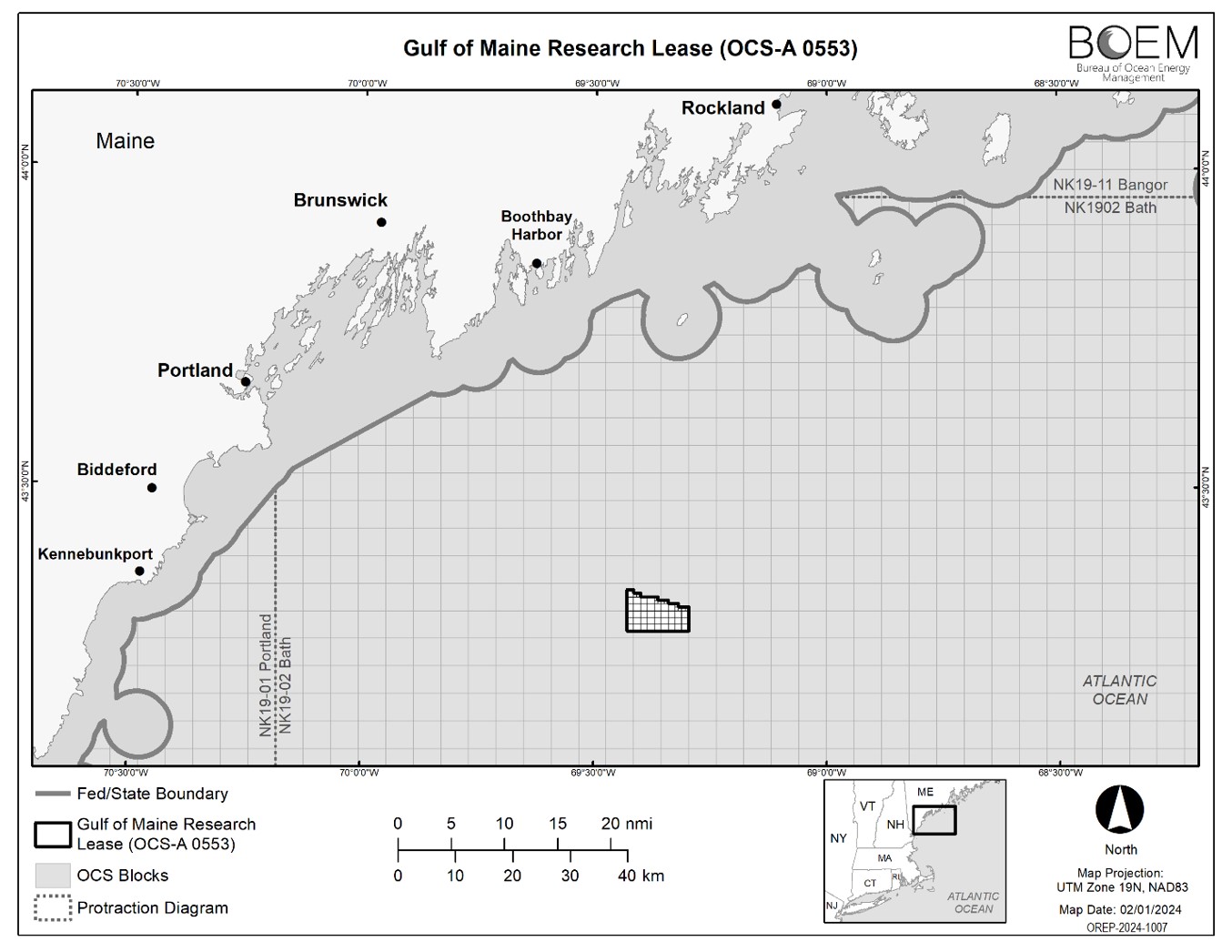In November 2020, Maine announced plans to develop the array. With only a few floating offshore wind arrays operating in the world, the research array is needed to conduct important technological, operational, and scientific research to inform future floating offshore wind projects in the Gulf of Maine.
The research array will provide critical firsthand experience with a multi-turbine array, which will unlock greater understanding of how future floating wind farms will integrate with the marine environment and existing ocean uses.

With offshore wind development being accelerated by Federal and State policies, Maine's research array will facilitate groundbreaking research in floating offshore wind by identifying opportunities and challenges to existing uses, developing methods to avoid and minimize impacts to the ecosystem, and identifying ways to lower the cost of floating offshore wind energy.

Map of the research array lease BOEM has offered to Maine as of May 24, 2024. See FAQs below for more information on the lease location.
On May 24, 2024, BOEM offered a research lease to Maine. Upon the State's acceptance of the lease, the developer will continue to negotiate a Power Purchase Agreement (PPA) with the Maine Public Utilities Commission. Once the Commission makes a final determination on the PPA, the developer will move forward with a site assessment and other work that is required prior to seeking federal approval to construct the project. A research lease is still subject to the same rigorous review and approval process that commercial leases are which will include a Site Assessment Plan, a Construction and Operations Plan, and a National Environmental Policy Act Environmental Review. This process involves multiple opportunities for public review and comment and will likely take at least four years.